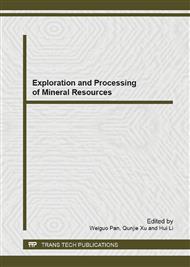p.664
p.669
p.673
p.677
p.682
p.686
p.692
p.696
p.700
Acid Leakoff Mechanism in Acid Fracturing of Naturally Fractured Carbonate Gas Reservoirs
Abstract:
In acid fracturing, excessive acid leakoff is thought to be the main reason that limits fracture propagation and live acid penetration distance, so its very important to do research about acid leak-off on naturally fractured carbonates. we developed a new model in this paper to simulate acid leakoff into a naturally fractured carbonates gas reservoir during acid fracturing. Our model incorporates the acid-rock reaction on the fractured surfaces. Given the information of the Puguang gas reservoir, the model predicts acid filtration and leakoff rate over time. In this study, we found that acid leak-off mechanism in naturally fractured carbonates is much different from that in reservoirs without natural fractures. The leakoff volume is several times of nonreactive acid. Since the acid widened natural fractures, leakoff velocity increase with time firstly , then decrease. While the leakoff velocity of the nonreactive fluid decrease sustained. We also analyze other sensitivity parameters of the acid leakoff. In this model, we explain the acid leakoff mechanism in naturally fractured carbonates, and provide a more accurate calculating of fluid loss.
Info:
Periodical:
Pages:
682-685
Citation:
Online since:
December 2013
Authors:
Keywords:
Price:
Сopyright:
© 2014 Trans Tech Publications Ltd. All Rights Reserved
Share:
Citation:


